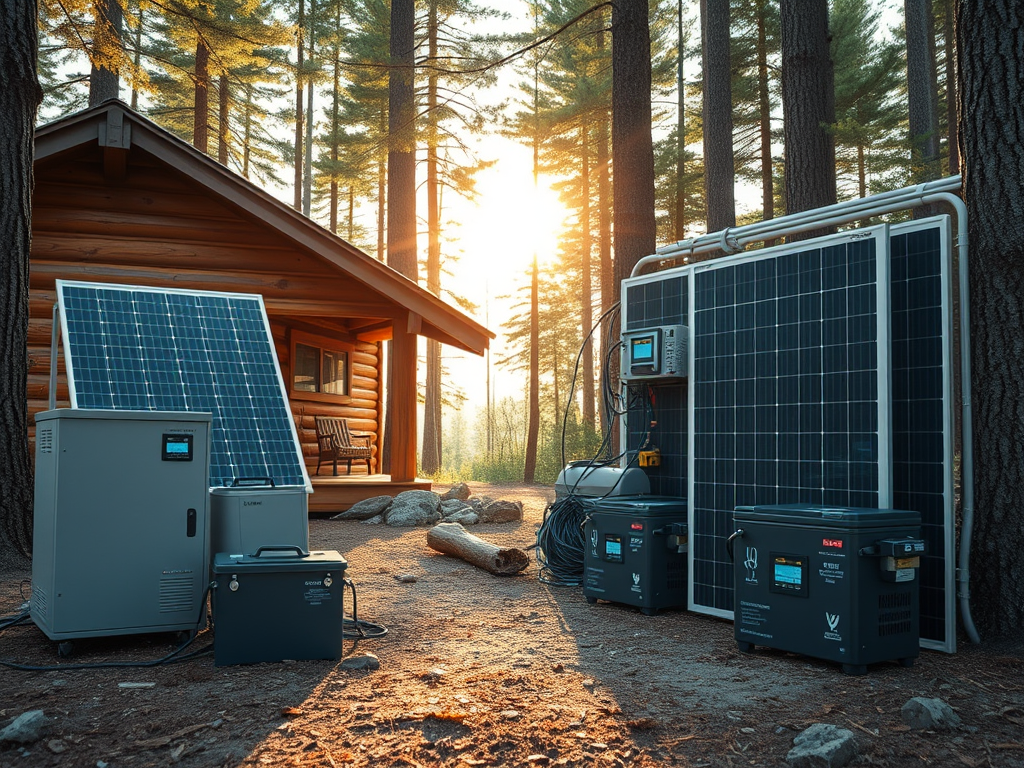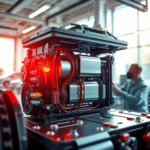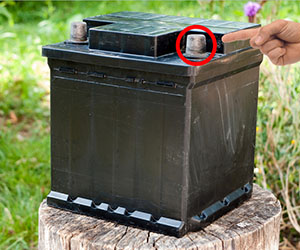The NOMAD Power System: From “What the hell is this?” to “Ah. I get it now.”
Let’s cut through the polite fluff for a second — because if you’re here, you’re probably frustrated as hell. Maybe you Googled “NOMAD Power System” and fell headfirst into a pit of PDFs, spec sheets, and military-grade buzzwords like “redundant multi-feed inverter isolation protocol” (what does that even mean?!). One minute you’re trying to understand how to power your off-grid cabin, and the next, you’re reading about battlefield communications and containerized microgrids like it’s some kind of dystopian IKEA manual.
You’re not dumb. It’s just… a lot.
And honestly? That’s okay.
Because here’s the thing most guides forget: power systems aren’t just wires and panels — they’re about control, about freedom, about knowing that when the lights go out, yours stay on. The NOMAD Power System is brilliant — almost annoyingly so — but only once you stop trying to understand everything all at once.
Let’s slow it down. No jargon. No pressure. Just a few real-talk insights that’ll help you move from “uhh, what?” to “I got this.”
1. The “Wait… why are there so many parts?” Spiral
Okay. First off, yeah — it looks like a nightmare. Batteries, inverters, charge controllers, fuel cells, folding solar panels, cables that look like they belong in a spaceship… even the manual has its own index.
It’s overwhelming because it’s modular by design, and that’s both the curse and the superpower. Think of it like a gourmet taco truck. You don’t have to understand the difference between a tomatillo and a guajillo pepper — you just need to know what kind of taco you want. (I know — weird analogy, but go with it.)
So, ask this instead:
What do I actually need this system to do?
Not what it can do. What you need. That’s the filter.
Like:
- Power a small off-grid office with laptops and lights?
- Keep a communications trailer up during a hurricane?
- Run tools on a construction site miles from the grid?
Start with your real-world needs — not the components.
Then build backward. Or better yet, find a supplier who will do that for you.
When I was helping set up a temporary relief camp in Colorado last fall (forest fires, tents, volunteers, chaos), we didn’t ask, “How many kilowatt-hours per day?” We said, “We need to keep the medical fridge cold and the comms online for 72 hours, no grid.” That made the conversation simple. Human. Solvable.
2. Solar? Diesel? Hydrogen? WHY SO MANY FUELS?!
Here’s where things get murky. You’ve got options. Some sound shiny and clean — others, well, smell like diesel and PTSD from noisy generators.
And that’s the rub. Most of us grew up with one energy source at a time. Wall outlet. Gas generator. Done. But the NOMAD system? It’s like giving your energy setup multiple personalities. And that’s… actually kind of amazing.
But confusing, too.
Here’s a secret: You don’t have to pick one.
In fact, you shouldn’t pick just one. NOMAD is designed for hybrid energy. That means maybe 80% solar and batteries… and a quiet diesel backup for rainy weeks. Or maybe you’ve got access to a local green hydrogen pilot program (they’re popping up in Europe now, California too) — so you mix in some H2 and cut the emissions even more.
Quick story: I once watched a team at a research outpost in the Arctic (not joking — real place, real cold) run a NOMAD-style unit using a combo of solar and a backup fuel cell. They called it “Frankensystem” but it worked — they ran all winter on it. No grid. No interruptions. Just good planning and layered backup.
So yeah — mix it up. It’s not indecision. It’s intelligence.
3. “Will this thing grow with me, or trap me in a box?”
You’re probably wondering if what you buy today will be trash in two years. Or worse, if you’ll outgrow it — like that weird tiny fridge you bought for your first apartment. (We’ve all done it.)
Scalability is the name of the NOMAD game.
It’s literally designed to move and grow with you, which is… cool, if a little confusing at first.
You don’t need the biggest system on Day One.
Start lean — then expand. Most units (assuming they’re not junk) let you bolt on more solar, more batteries, a stronger inverter — whatever. Ask the supplier if it’s truly modular. Not “modular” in the buzzword sense. Like, can I actually plug in another solar array next year without redoing everything?
If they say no — walk away.
Think of it like LEGO. Start with a power block. Then snap on a “battery brick.” Add a “fuel module.” Boom. Fortress of solitude — except it runs your lights and satellite dish.
4. Dashboard Despair: Why does this screen look like a cockpit?
God help us all if the touchscreen interface was designed by engineers who never asked, “Will a normal human understand this?”
Kilowatt-hours. Float voltage. SOC. Relay status.
It’s not you. It’s them.
But — you can learn this. Start small. Ignore the deep data. Just focus on a few numbers:
- Battery level
- Energy in vs. out
- Generator status
Check it daily for a week. You’ll start to recognize patterns. Eventually, it becomes background noise. Like the way you don’t think about how your phone charges — you just know when it’s at 20% and when it’s full.
Oh — and don’t be afraid to call tech support and say:
“Hey, this screen is a mess. Can someone translate this for me?”
You paid for that system. You deserve clarity.
5. The Gut-Churning Fear of Failure
Here’s the emotional bit. The part that doesn’t show up in any manual.
What if it fails when I need it most?
That’s the quiet fear. The deep-down dread.
I get it. You’re not just relying on a machine — you’re trusting it with your food, your comms, your safety. That’s heavy. It’s also what makes this work so meaningful.
So do what every good field operator, first responder, or off-grid dweller does:
Test it before you need it.
Simulate a blackout. Go a weekend without the grid. Watch what happens.
You’ll screw up something, probably. It’s fine. Better now than later. You’ll get smarter, fast.
Confidence comes not from specs — but from use.
So What Now?
Take a breath.
Yes, the NOMAD Power System is complex. But it’s only complex if you try to understand all of it immediately. You don’t have to be a technician. You don’t have to be an energy wonk.
Start with what you need. Build from there. Ask the “dumb” questions (they’re usually the smartest). Expect a few hiccups — then keep going anyway.
Because once you figure it out — even just the basics — it clicks. The lights stay on. The fridge hums. The panic? Gone. You’ve got power, and it goes where you go.
And that’s the whole point.
So yeah, maybe it’s not magic. But it’s close.




